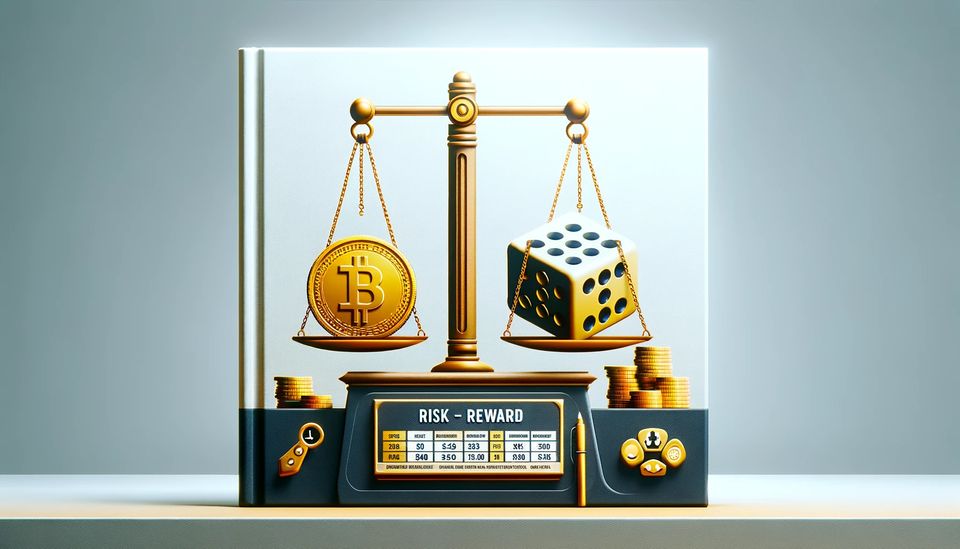How To Use Game Theory With Influencer Marketing

Influencer marketing is on the rise as publishers launch their own influencer programs to market and promote their games. However, there is a missed opportunity that game publishers can utilize within their games and in collaboration with influencers, related to game theory and risk-reward decision-making.
In this article, we will cover what risk-reward decision-making in game theory entails, the basics of performance-based influencer marketing, and how the two are interconnected. By the end of this article, there should be a greater understanding of how this can benefit game marketing.
What is Risk-Reward Decision Making?
Everyone has seen TV game shows where contestants are given the option of taking a cash prize and exiting the game or risking their earnings for a potentially higher payout.
In "Double Jeopardy" on the game show "Jeopardy," the risk involves potentially losing twice the amount wagered if the contestant answers incorrectly. Conversely, the reward is the chance to double the wagered amount with a correct answer. This element introduces a strategic dimension to the game, where contestants must weigh the chance of significant loss against the potential for a substantial score increase.

In game theory, a scenario where a player can either take the current reward or risk it for a potentially higher one is often referred to as a "risk-reward decision." This type of decision-making is fundamental to many game theory models and relates closely to the concept of "expected utility," where players assess potential benefits against risks.
We will apply this risk-reward decision-making to performance-based influencer marketing.
What is Performance-Based Influencer Marketing?
Performance-based influencer marketing is a new approach to compensating influencers, linking their earnings directly to the results they achieve. Unlike the traditional fee-for-service model, where influencers are paid a set amount for specific content, this method ties compensation to tangible engagement metrics like likes, comments, and shares. The more an influencer's content resonates and engages the audience, the more they can potentially earn. While this introduces an element of uncertainty, it also offers the opportunity for unlimited earnings, motivating influencers to create content that genuinely connects with their audience.
In this model, influencers use a rate card provided by partners, such as game publishers or indie developers, to gauge their potential earnings.

This rate card specifies the value of different interactions (views, comments, clicks) across various social media platforms, allowing influencers to strategize and target the most lucrative opportunities. Additionally, influencers are encouraged to consider their past performance on different platforms for more accurate earnings predictions. This approach not only maximizes earnings based on content impact but also enables influencers, especially micro-influencers, to effectively leverage their niche audiences, irrespective of follower count.
Risk-Reward with Performance-Based Influencer Marketing
When people first hear about performance-based influencer marketing on platforms such as Glitch, a common misconception is that influencers are paid solely on commission, which seems unfair. However, with platforms like Glitch, influencers are given a choice.
For example, let's say an influencer charges $1,000 per post. By combining game theory with performance-based marketing, the influencer is presented with choices:
- Standard Flat Rate: The influencer charges their standard $1,000 and earns no more or less, regardless of campaign results.
- Hybrid Model With Double Payout: Here, the influencer charges a $500 flat fee upfront but can earn up to $2,000 in commission if their campaign performs well.
- Commission Only: In this model, the influencer earns only commissions but has the opportunity to make up to $3,000.
Applying risk and reward, influencers who are willing to take a greater risk are rewarded with the potential for a higher payout. The risk is that they could earn less if their campaigns do not perform well.
How this Model Benefits Games And Influencers
The intersection of risk-reward decision-making from game theory and performance-based influencer marketing presents a dynamic and mutually beneficial opportunity for game publishers, indie developers, and influencers alike.
For game publishers and indie developers, this model offers a cost-effective marketing strategy. By tying compensation to performance, they ensure that their investment directly correlates with tangible results, such as increased engagement and game sales. This approach also encourages influencers to produce more creative and engaging content, as their earnings are directly linked to their campaign's success. This not only leads to higher quality promotions but also aligns influencer efforts more closely with the marketing objectives of the game publishers and developers.
Influencers, on the other hand, stand to benefit from the potential for higher earnings and the flexibility to choose a compensation model that aligns with their risk appetite and confidence in their content's performance. This model also democratizes the influencer landscape, allowing micro-influencers with highly engaged niche audiences to compete on an even playing field with larger influencers. By focusing on engagement rather than follower count, influencers are incentivized to create content that resonates deeply with their audience, fostering a more authentic and effective marketing approach.
Ultimately, this innovative approach to influencer marketing in the gaming industry leverages the thrill and strategic thinking of game theory, encouraging a more calculated yet creative marketing landscape. It promotes a win-win scenario, where game publishers and developers can maximize their marketing ROI, and influencers can optimize their earnings and creative freedom. This synergy not only elevates the marketing strategies within the gaming industry but also paves the way for more engaging and successful promotional campaigns.
